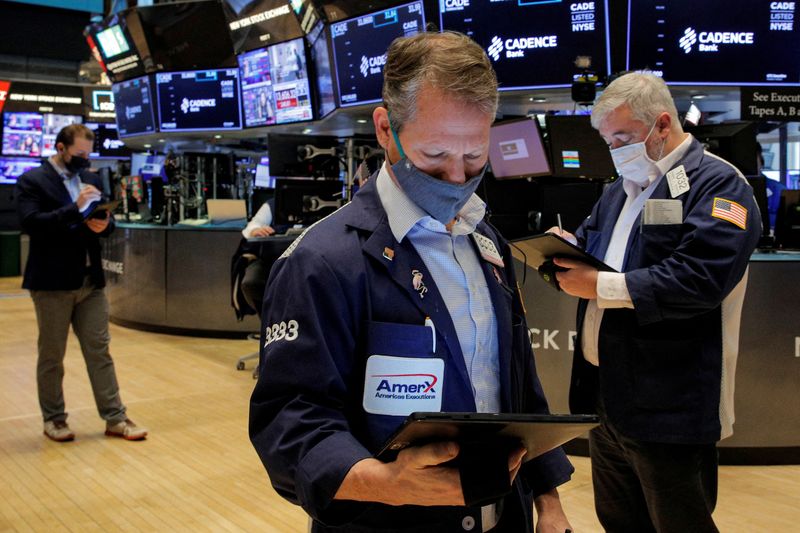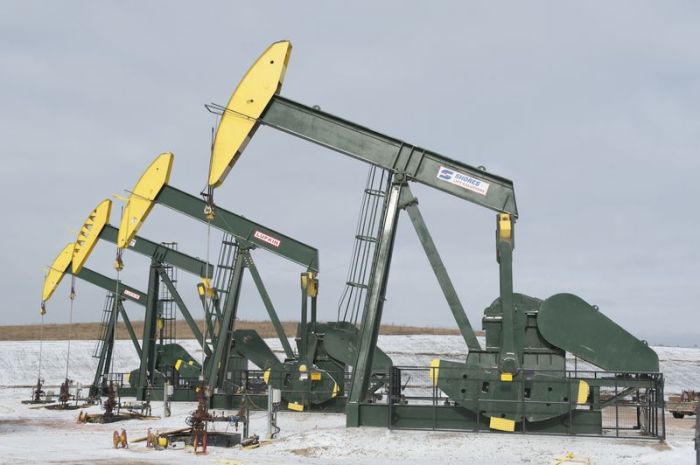WASHINGTON (Reuters) – Wall Street ended the day lower on Tuesday after another tumultuous day of trading while oil jumped more than 2% as geopolitical tensions and Wednesday’s Federal Reserve update occupied investor focus.
All three major U.S. stock indices experienced a repeat of Monday’s bumpy trading. They were unable to completely shake off steep losses earlier in the day and erased Monday’s modest gains with new losses.
The Dow Jones Industrial Average fell 0.19%, the S&P 500 lost 1.22% to 4,356.45 and the Nasdaq Composite dropped 2.28%.
Tuesday’s decline came after three straight weeks of losses as the S&P flirted with correction territory. If the bellwether index closed 10% or more below its record high reached on Jan 3, it would have confirmed it entered a correction on that date. It ended the session 9.2% below that level.
World stocks are on course for their biggest monthly drop since the COVID-19 pandemic hit markets in March 2020. The MSCI world equity index, which tracks shares in 45 nations, was down 0.99%.
Investors are awaiting Wednesday afternoon, when the Fed will update its policy plan, likely fleshing out timing on expected rate hikes and dwindling of its massive balance sheet. At the same time, growing tensions as Russian troops amassed on Ukraine’s border added to a risk-averse environment for investors.
Safe havens including the dollar and gold both posted gains as investors shied away from risk.
Concerns about potential conflict in eastern Europe also drove oil prices higher, as concerns supplies could become tight drove the commodity up over 2%. Brent futures rose $1.93, or 2.2%, to settle at $88.20 a barrel, while U.S. West Texas Intermediate (WTI) crude rose $2.29, or 2.8%, to settle at $85.60.
“Geopolitical risks sent crude prices higher as a tight oil market that is already battling low inventories seems vulnerable to shortages in the coming months,” said Edward Moya, senior market analyst at OANDA.
“Energy traders don’t know how the situation over the Ukraine-Russia border will unfold or if Iran will be able to reach a nuclear deal, but the odds are something won’t go right and that will likely lead to some supply shortages for the oil market,” Moya added.
On Wednesday, the Federal Reserve is expected to give guidance about the trajectory of monetary policy tightening, with investors expecting, if the economy stays on its current track, the first post-pandemic U.S. rate hike in March and the Fed to begin shrinking its balance sheet later in the year.
“At this time, it seems likely that runoff will begin no later than June,” said Scott Ruesterholz, a portfolio manager at Insight Investment. “While Omicron (coronavirus variant) is likely to weigh on January data, expectations are that its impact will be short-lived, and with inflation so elevated and the jobs market quite healthy, there appears to be a very high hurdle for the Fed not to raise rates.”
In the bond market, investors largely held tight with a Fed decision a day away. The U.S. 10-year yield rose about five basis points to 1.7814%..
The U.S. dollar reached a two-week high earlier Wednesday against other currencies as investors flocked to the safe haven. The dollar index, which tracks the greenback versus a basket of six currencies, rose 0.06%.
Spot gold prices rose 0.25% to $1,847.61 an ounce.
(Reporting by Pete Schroeder in Washington; Editing by David Evans, Susan Fenton, Will Dunham, Nick Macfie and Barbara Lewis)

























